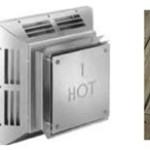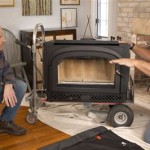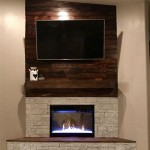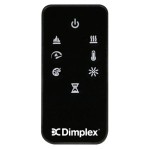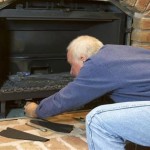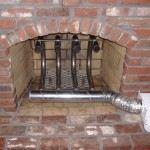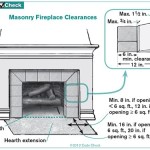Bed Bath & Beyond Fireplace Heater: A Comprehensive Overview
Bed Bath & Beyond, a retailer known for its extensive selection of home goods, historically offered a variety of electric fireplace heaters. These devices combine the aesthetic appeal of a traditional fireplace with the functionality of a space heater, providing both visual warmth and supplemental heating. While Bed Bath & Beyond has undergone significant restructuring, understanding the features and benefits of the fireplace heaters they once offered remains pertinent for consumers seeking similar appliances from other retailers.
Electric fireplace heaters operate by converting electrical energy into heat using a heating element, often a coil or ceramic plate. A fan then circulates the warm air into the room. These heaters typically feature adjustable thermostats, allowing users to control the desired room temperature. A key component of their appeal is the simulated flame effect, which is achieved through various technologies, including LED lights and rotating reflectors, replicating the appearance of a burning fire. This visual element contributes to the ambiance of a room without the maintenance or safety concerns associated with traditional fireplaces.
The types of electric fireplace heaters available through retailers like Bed Bath & Beyond encompassed a range of styles and sizes. These ranged from freestanding units resembling traditional hearths to wall-mounted models, corner units, and even tabletop versions. The selection often included units with different BTU (British Thermal Unit) ratings, which determine the heating capacity of the appliance. A higher BTU rating indicates a greater heating output, making it suitable for larger rooms. Consumers could therefore select a heater based on the size of the space they intended to heat.
Key Point 1: Features and Functionality
Electric fireplace heaters generally share a common core set of features designed to optimize both heating performance and user convenience. These features often influence the selection process for potential buyers.
Adjustable Thermostat: Most electric fireplace heaters are equipped with an adjustable thermostat, allowing users to maintain a consistent room temperature. The thermostat monitors the surrounding air temperature and automatically cycles the heating element on and off to maintain the selected setting. This feature not only enhances comfort but also contributes to energy efficiency by preventing the heater from running continuously when the desired temperature is reached.
Multiple Heat Settings: In addition to the thermostat, many models offer multiple heat settings, typically low, medium, and high. These settings provide further control over the heating output, allowing users to adjust the intensity based on their immediate needs and the prevailing ambient temperature. For instance, a lower setting might be sufficient for maintaining a comfortable temperature in a small, well-insulated room, while a higher setting might be required to quickly warm a larger or draftier space.
Flame Effect Control: The simulated flame effect is a central element of the aesthetic appeal of electric fireplace heaters. Many models offer adjustable flame settings, allowing users to customize the brightness and intensity of the flame. Some advanced units may even offer different flame colors or patterns to create a more realistic and personalized visual experience. The flame effect can often be operated independently of the heating function, allowing users to enjoy the ambiance of a fireplace without generating heat, particularly during warmer months.
Overheat Protection: Safety is a paramount consideration in the design of electric heaters. Overheat protection is a standard safety feature that automatically shuts off the heater if it detects an abnormally high internal temperature. This prevents the unit from overheating and potentially causing a fire hazard. This feature is typically implemented through a thermal cutoff switch that interrupts the power supply to the heating element when the temperature exceeds a predetermined threshold.
Tip-Over Protection: Another important safety feature is tip-over protection, which automatically shuts off the heater if it is accidentally knocked over or tilted beyond a certain angle. This prevents the heater from continuing to operate in an unstable position, reducing the risk of fire or injury. This feature is usually implemented through a tilt sensor that detects when the unit is not upright and immediately cuts off the power supply.
Remote Control: Many electric fireplace heaters include a remote control, allowing users to adjust the settings from a distance. This feature enhances convenience, particularly for controlling the heater from across the room or when the unit is placed in a hard-to-reach location. The remote control typically allows users to adjust the thermostat, heat settings, flame effect, and power on/off.
Timer Function: Some models incorporate a timer function, allowing users to program the heater to turn on or off at specific times. This can be useful for preheating a room before arrival or for automatically turning off the heater after a certain period of time, conserving energy and providing added peace of mind.
Key Point 2: Benefits of Electric Fireplace Heaters
Electric fireplace heaters offer several advantages compared to traditional fireplaces and other types of space heaters. These benefits contribute to their popularity among consumers seeking a convenient and aesthetically pleasing heating solution.
Ease of Installation: Electric fireplace heaters are generally easy to install, requiring only a standard electrical outlet. Unlike traditional fireplaces, they do not require venting, gas lines, or professional installation. This makes them a convenient option for renters, homeowners, and anyone seeking a hassle-free heating solution. The units are typically portable, allowing them to be easily moved from one room to another as needed.
Safety: Electric fireplace heaters are generally safer than traditional fireplaces, as they do not produce real flames or emit smoke, fumes, or carbon monoxide. The absence of open flames eliminates the risk of sparks and embers escaping and potentially causing a fire. The safety features such as overheat protection and tip-over protection further enhance their safety profile.
Energy Efficiency: Electric fireplace heaters can be relatively energy-efficient, particularly when used to heat a specific room or area rather than the entire house. By providing supplemental heat to a localized space, they can reduce the strain on the central heating system and potentially lower energy bills. Models with adjustable thermostats and multiple heat settings allow users to optimize energy consumption based on their individual needs.
Aesthetic Appeal: The simulated flame effect of electric fireplace heaters adds a touch of ambiance and visual warmth to any room. The realistic flame appearance can create a cozy and inviting atmosphere, enhancing the overall aesthetic appeal of the space. With a variety of styles and designs available, consumers can choose a model that complements their existing décor.
Low Maintenance: Electric fireplace heaters require minimal maintenance compared to traditional fireplaces. There is no need to clean up ashes, sweep chimneys, or worry about creosote buildup. The only maintenance typically required is dusting the unit occasionally to keep it clean and free of debris.
Year-Round Use: As previously noted, the flame effect can often be operated independently of the heating function, allowing users to enjoy the ambiance of a fireplace even during warmer months. This makes them a versatile addition to any room, providing both warmth and visual appeal throughout the year.
Key Point 3: Considerations When Choosing an Electric Fireplace Heater
Selecting the right electric fireplace heater requires careful consideration of several factors, including room size, heating needs, aesthetic preferences, and budget. Evaluating these factors will help ensure that the chosen unit meets the specific requirements of the user and the space it will occupy.
Room Size and BTU Rating: The size of the room that needs to be heated is a critical factor in determining the appropriate BTU rating of the electric fireplace heater. A general guideline is that 10 BTU are required to heat one square foot of space. Therefore, a room that is 200 square feet would require a heater with a BTU rating of at least 2,000. However, this is just a guideline, and other factors such as insulation, ceiling height, and the number of windows and doors can also influence the heating requirements.
Style and Design: Electric fireplace heaters are available in a wide range of styles and designs, from traditional hearths to modern, minimalist units. When choosing a style, consider the existing décor of the room and select a unit that complements the overall aesthetic. Consider factors such as the color, material, and shape of the unit.
Features and Functionality: Evaluate the features and functionality of different models, such as adjustable thermostat, multiple heat settings, flame effect control, overheat protection, tip-over protection, remote control, and timer function. Determine which features are most important and select a unit that offers the desired functionality.
Energy Efficiency: Look for models with energy-saving features, such as adjustable thermostats and multiple heat settings. Consider the energy consumption of the unit and compare it to other models. Look for models with an Energy Star rating, which indicates that they meet certain energy efficiency standards. While Bed Bath & Beyond no longer exists in its previous form, the products were often selected base on energy efficient criteria.
Safety Certifications: Ensure that the electric fireplace heater is certified by a reputable safety organization, such as UL (Underwriters Laboratories) or ETL (Intertek). These certifications indicate that the unit has been tested and meets certain safety standards.
Price and Budget: Electric fireplace heaters range in price from relatively inexpensive to more expensive models. Set a budget before starting the shopping process and stick to it. Compare prices from different retailers and consider the features and functionality offered at different price points. Review warranties and consider purchasing extended warranties for added protection.
Reviews and Ratings: Before making a purchase, read reviews and ratings from other customers. This can provide valuable insights into the performance, reliability, and overall customer satisfaction of different models. Pay attention to both positive and negative reviews and consider the overall consensus.
The information presented outlines the key aspects of electric fireplace heaters, emphasizing their features, benefits, and considerations for selection. While Bed Bath & Beyond's role in offering these products has changed, this knowledge remains valuable for consumers seeking a similar product.

40 In Freeing Electric Fireplace With Stone Mantel L X D H Inch 12 39 2 Bed Bath Beyond 33550080

Real Flame Kipling White Electric Fireplace Com Ping The Best Deals On Indoor Firepl Home

Hamilton Portable Electric Fireplace By E Flame Usa 30016088 Free Standing

Duraflame Dfi 8511 02 Broe Infrared Quartz Electric Stove Heater Bed Bath Beyond 10702444

Duraflame Dfs 550 21 Blk Black Maxwell Electric Stove With 45 Off

Results For Wall Mounted Electric Fireplace At Mount

Duraflame Dfs 550 21 Blk Black Maxwell Electric Stove With 45 Off

Duraflame Dfs 550 21 Blk Black Maxwell Electric Stove With 45 Off

Duraflame Dfs 550 21 Blk Black Maxwell Electric Stove With 45 Off
Related Posts

